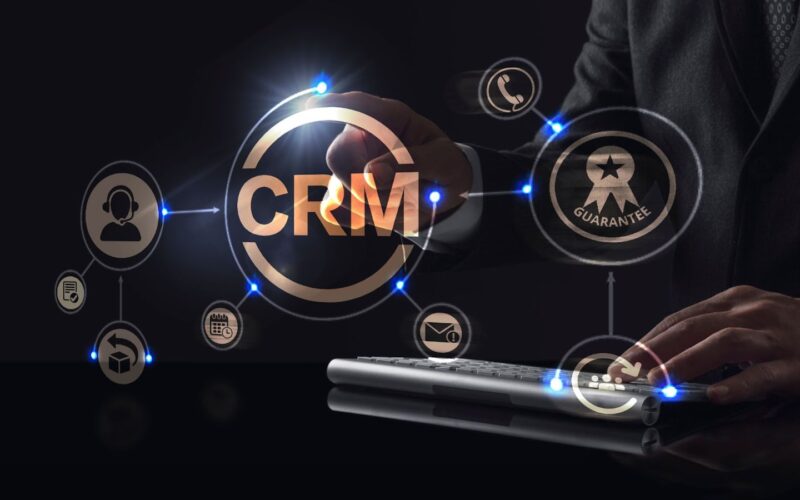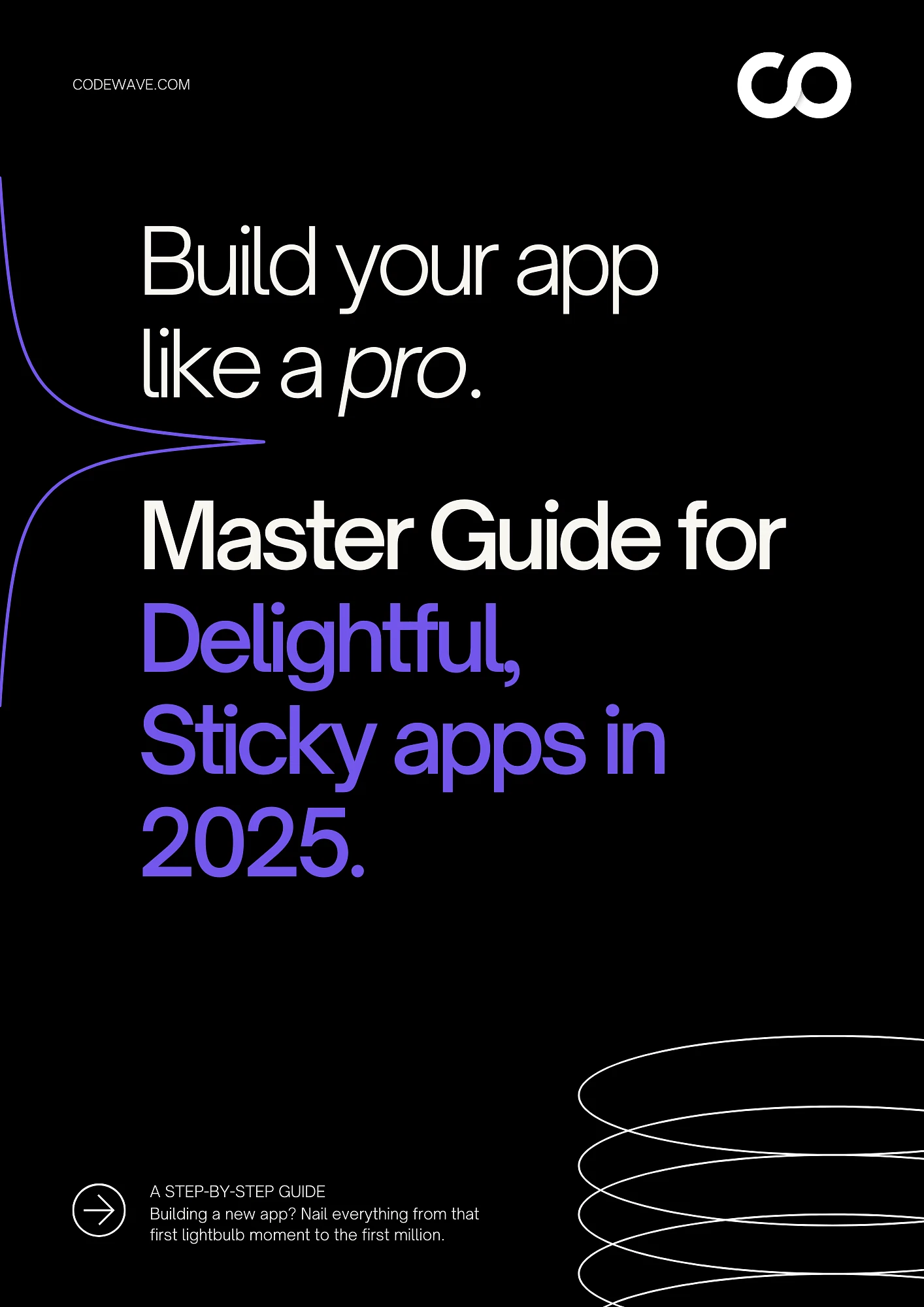Are your sales and customer service teams struggling with disconnected data? This chaos often stems from using generic software. These off-the-shelf solutions fail to address your unique business workflows. The result is declining productivity and missed revenue opportunities.
Your business processes are unique. Your customer relationship management tool should reflect that specificity. A custom system aligns perfectly with your operational needs and goals. It centralizes customer interactions and automates critical tasks for growth.
This guide will walk you through the custom CRM development process. We will detail each essential step from initial planning to final deployment. You will learn how to build a system that truly fits your business. Let us transform how you manage your customer relationships.
Key Takeaways
- Custom CRM development is a strategic business investment, not just a tech project. It builds a system that conforms to your unique workflows, unlike off-the-shelf software that forces you to adapt.
- The most significant risks are human, not technical. Success hinges on managing user adoption and data migration through early involvement and phased rollouts.
- A phased, Agile development process is non-negotiable. It breaks the project into manageable sprints, providing regular checkpoints and controlling scope creep and budget.
- Total Cost of Ownership (TCO) is the true metric for budgeting. Factor in long-term costs for integrations, maintenance, and scaling, not just the initial development price.
- Your choice of development partner dictates the project’s outcome. Their expertise in your industry and proven methodology is as critical as the features they build.
What Is CRM Development
CRM development is the creation of custom customer relationship management software. It moves beyond standard features in pre-built platforms. This process builds a system specific to your sales and support workflows. You gain a tool designed for your team’s exact operational requirements.
Generic CRM platforms often force a change in your business processes. Their one-size-fits-all approach creates friction for users. Custom development reverses this relationship entirely. The software is built to conform to your established and effective workflows. This alignment eliminates resistance and accelerates user adoption.
The solution involves designing a system around your customer data and interaction history. It integrates sales, marketing, and customer service into one view. Implementation requires mapping your unique process stages into the software’s architecture.
You will have a centralized database that tracks the entire customer lifecycle. This provides a single source of truth for your entire organization.
Understanding what it is naturally leads to the question of why your business should invest in it.
Also read: Step-by-Step Guide for CRM Software Development from Scratch
Why Choose CRM Software Development?
A custom CRM development process moves your business beyond generic limitations. It builds a strategic asset that directly supports your growth objectives. This approach embeds your unique sales methodology and customer policies into the software.
The result is a system that actively works to improve your key metrics. Consider these specific advantages for your business growth:
- Model Your Unique Sales Process
A custom CRM codifies your specific sales stages and approval workflows. It reflects your deal progression and customer onboarding steps accurately. This provides clear visibility into pipeline health and potential bottlenecks. Your team follows a consistent, repeatable process for closing deals.
- Integrate Your Existing Tech Stack
Connect your CRM directly with accounting, marketing, and ERP systems. This eliminates manual data entry between different software platforms. You gain a unified view of customer financials and engagement history. Data flows automatically, ensuring accuracy and saving significant time.
- Automate Complex Business Rules
Implement automation based on your specific operational logic. Automate task assignments, quote generation, and service escalation paths. This reduces manual oversight and ensures consistent process execution. Your team can focus on high-value customer interactions instead.
- Scale with Your Evolving Business Needs
A custom system adapts to new products, markets, and acquisition strategies. You can add modules for new service lines or compliance requirements. The architecture supports your growth without requiring a platform switch. This protects your initial investment and maintains operational continuity.
- Own and Secure Your Customer Data
Host your CRM on the infrastructure you select and control. This ensures compliance with specific industry data protection regulations. You mitigate risks associated with third-party vendor data breaches. Full ownership also allows for advanced, proprietary data analytics.
Are you spending too much time on manual data entry between systems? Codewave’s custom software development builds a CRM that integrates your entire tech stack. Explore our CRM Consulting and Implementation Services to connect your tools.
Convinced of the value? Let us break down the systematic process for building your custom CRM.
The Step-by-Step CRM Development Process
A structured CRM development process transforms a complex project into manageable phases. This systematic approach ensures your final product aligns with business objectives. It mitigates risks associated with scope creep and budget overruns.
Following these steps guarantees your custom tool delivers expected functionality and user adoption. Let’s examine the key stages of a successful build:
Step 1: Discovery and Requirement Analysis
This initial phase focuses on defining the project’s scope and objectives. You must identify all stakeholder needs and specific pain points. The goal is to create a detailed blueprint for the development team. This document will guide all subsequent design and programming work.
Key activities in this phase include:
- Conducting workshops with sales, marketing, and service teams.
- Documenting existing workflows and identifying improvement areas.
- Defining specific, measurable goals for the new system.
- Outlining integration requirements with other business software.
Step 2: Planning and Technical Specification
Here, the conceptual requirements are translated into a technical plan. Your development team will architect the database and select the technology stack. This phase also produces a realistic project timeline and a detailed budget. Proper planning prevents major rework and cost issues later.
The core outputs of this stage are:
- A system architecture diagram detailing data relationships.
- A chosen technology stack, such as Python or ReactJS.
- A finalized project plan with milestones and delivery dates.
- A clear definition of roles for your internal and external teams.
Also read: JavaScript vs Python for Web Development: Which is the Best Choice
Step 3: UI/UX Design and Prototyping
The design phase creates the visual interface and user experience flows. Designers build wireframes and interactive prototypes for your review. This focuses on user-centric design to ensure high adoption rates. You will validate the proposed workflows before any code is written.
This stage typically involves creating:
- User personas representing different system users.
- Wireframes that map the layout of key screens.
- Clickable prototypes that simulate the final user journey.
- A design system for consistent visual elements.
Step 4: Development and Implementation
Developers now write code to build the application according to specifications. This phase is often broken into short, iterative cycles called sprints. Each sprint delivers a working piece of software for your feedback. Agile methodology allows for adjustments based on your ongoing input.
Development is split into logical parts:
- Backend Development: Building the database, server, and application logic.
- Frontend Development: Creating the user interface your team will see.
- Third-Party Integration: Connecting APIs for tools like email or payment gateways.
Step 5: Rigorous Testing and Quality Assurance
Quality Assurance engineers test the application to find and fix defects. They verify that all features work as specified in the requirements document. Testing ensures the system is stable, secure, and ready for users. This phase is critical for delivering a reliable and professional product.
The QA process includes several test types:
- Functionality Testing: Checking if all features work correctly.
- User Acceptance Testing (UAT): Having end-users validate the system.
- Security Testing: Identifying and resolving potential vulnerabilities.
- Performance Testing: Ensuring the system handles expected user loads.
Step 6: Deployment and Go-Live
The completed and tested CRM is moved to a live production environment. Your team’s historical data has been migrated into the new system. This step requires careful planning to minimize business disruption. A successful launch marks the transition from a project to an operational tool.
A smooth deployment requires a clear plan for:
- Data migration from old systems to the new CRM.
- Final user training sessions and support documentation.
- A rollout strategy, such as a phased or all-at-once launch.
- Immediate technical support during the initial go-live period.
Step 7: Ongoing Maintenance and Support
Post-launch support ensures your CRM continues to perform optimally. This includes fixing any undiscovered bugs and updating the software. Maintenance also involves adding new features as your business evolves. A long-term partnership keeps your system aligned with your growing needs.
Need to adapt your CRM as your business grows and changes? Codewave provides ongoing maintenance and support to scale with your evolving needs. Contact us to learn more about our services.
Before committing to a build, you must first decide if a custom solution is the right path.
Also read: Achieving Innovation Success: Strategies and Best Practices
How To Choose The Right CRM Software
Selecting a CRM requires a strategic evaluation of your business needs and resources. This decision impacts your operational efficiency and customer relationships for years. A methodical approach prevents costly mistakes with unsuitable software.
You must assess both immediate requirements and long-term growth plans. The right choice will scale with your business and support its evolution. Use these key criteria to guide your evaluation and selection process effectively.
- Evaluate Your Core Business Requirements
Begin by documenting the specific problems you need the CRM to solve. Identify essential features for your sales, marketing, and service teams. Distinguish between “must-have” functionalities and “nice-to-have” features. This clarity prevents overpaying for unnecessary complexity or underbuying a limited system.
Key questions to ask your team:
- What is our primary goal: sales automation, customer service, or marketing?
- Which current workflows are most critical to preserve and improve?
- What reporting capabilities are necessary for our management decisions?
- Analyze Integration Capabilities
Your CRM must connect with your existing email, accounting, and marketing tools. Verify the availability and reliability of these specific integrations. Incompatible systems create data silos and increase manual work for your staff. Seamless data flow is a non-negotiable feature for modern business operations.
Confirm technical compatibility for:
- Your e-commerce platform and payment processors.
- Marketing automation and email marketing software.
- Essential productivity suites like Microsoft 365 or Google Workspace.
- Consider Total Cost of Ownership and Scalability
Look beyond the initial subscription or development cost. Factor in expenses for implementation, training, and ongoing support. The system must accommodate your projected user growth and data volume increases. A scalable solution protects your investment and avoids a disruptive platform migration later.
- Assess Vendor Expertise and Support Services
The partner you choose is as important as the technology they provide. Review their track record with businesses in your industry and of your size. Ensure they offer reliable customer support and clear service level agreements. A qualified partner will help you navigate challenges and maximize your system’s value.
Once you have chosen the custom development route, being aware of potential hurdles is crucial.
Also read: Understanding the New Product Introduction Process in 6 ways
CRM Implementation Challenges And Risks
Anticipating potential roadblocks is crucial for a smooth CRM rollout. Unaddressed challenges can derail adoption and negate your investment. These issues often stem from internal processes, not the technology itself.
Proactive planning turns these risks into manageable project milestones. Understanding them ensures your system delivers its intended business value. These common hurdles can be mitigated with a clear strategy and expert guidance:
- Resistance to User Adoption
Employees may resist using the new system due to habit or fear. Complex interfaces or increased data entry workload cause this friction. Low adoption directly undermines the CRM’s ROI and data accuracy.
Solution: Involve users early in the design process through workshops. Choose a partner, like Codewave, that focuses on intuitive UI/UX design. A phased rollout with dedicated training sessions also eases the transition.
- Poor Data Quality and Migration Issues
Legacy data is often inconsistent, duplicated, or stored in silos. Migrating this flawed data corrupts your new CRM from day one. This leads to mistrust in the system’s reports and analytics.
Solution: Begin with a comprehensive data audit and cleansing strategy before migration. Implement data validation rules within the new CRM. A structured data migration plan ensures only clean, relevant information is transferred.
- Unclear Scope and Budget Overruns
Project scope can expand uncontrollably without defined requirements. Adding features mid-development increases costs and delays your launch. This strains resources and can compromise the final product’s core functionality.
Solution: A detailed discovery phase with documented requirements is essential. An Agile development approach, with fixed-scope sprints, provides flexibility without sacrificing budget control.
- Inadequate Integration with Existing Tools
Your CRM must communicate with email, accounting, and marketing platforms. Failed integrations force manual work, creating inefficiencies and data gaps. This isolation limits the CRM’s role as a central customer hub.
Solution: Prioritize API-first development and confirm integration feasibility during planning. Our custom software development services ensure your CRM works within your existing tech stack.
- Underestimating Security and Compliance Needs
Customer data is a major target for cyber threats and has legal protections. A security breach can cause substantial financial loss and harm to reputation. Non-compliance with regulations like CCPA also results in heavy penalties.
Solution: Implement strong security protocols like encryption and access controls from the start. Regular penetration testing identifies vulnerabilities before they can be exploited.
While these challenges are real, they are manageable with the right strategy and partner.
Also read: Innovative Product Development Strategies to Fuel Business Growth
Conclusion
A custom CRM development process strategically aligns software with your business goals. It moves you beyond the limitations of generic, off-the-shelf solutions. This method builds a system that reflects your unique sales and service workflows. You gain a powerful tool for centralizing data and automating key processes.
Following a structured path from discovery to deployment is critical for success. This approach mitigates risks like poor user adoption and data migration issues. Each phase builds upon the last to ensure a stable and effective outcome. The result is a CRM that your team will use and trust daily.
Handling this complex process alone can feel overwhelming for any business leader. You need a partner like Codewave, which understands both technology and your commercial objectives.
Build Your Strategic Advantage with Codewave
We help you translate your specific operational needs into an effective CRM. Our team manages the entire development lifecycle from initial concept to launch. We focus on building a system that your team will readily adopt and use. This ensures your investment directly contributes to improved customer relationships and growth.
- Customized Development: We design a CRM that fits your sales process and terminology. This means your team can use it naturally, with little training, and it will align perfectly with how you work.
- Smooth Integration: Our CRM seamlessly connects with the tools you already use. Whether that’s accounting software, marketing platforms, or customer support systems, this ensures data flows across departments without friction, keeping everything in sync.
- Easy for Your Team to Adopt: We prioritize user-friendly design, making sure the CRM is simple to navigate and quick to adopt. A system that’s intuitive and easy to use leads to better collaboration and higher productivity.
- Ongoing Support for Growth: After the CRM is live, we stay by your side, offering ongoing support and updates. This keeps your system aligned with your evolving business needs and ensures it remains a strong asset as you grow.
Let us help you turn customer data into your most valuable asset.
Contact us to learn more about our CRM development services!
FAQs
Q. What is the usual cost involved in developing a custom CRM?
There is no single price. Custom CRM development cost depends on features, integrations, and complexity. A basic system may start lower, while an enterprise solution with AI and complex automations costs significantly more. You must budget for implementation, training, and ongoing maintenance.
Q. How long does it take to build a custom CRM?
A complete custom CRM development process typically takes four to nine months. The timeline depends directly on the project’s scope and complexity. A phased, Agile approach delivers working modules every few weeks. This allows for continuous feedback and adjustment throughout the project lifecycle.
Q. What is the difference between CRM development and CRM implementation?
Development is the technical process of designing, coding, and testing the software. Implementation is the business process of installing, configuring, and integrating that software into your daily operations. It includes data migration, user training, and change management for your team.
Q. What are the most important features in a custom CRM?
Core features include contact/account management, lead tracking, and sales pipeline visualization. Essential advanced features are workflow automation, reporting/analytics dashboards, and API-based integrations. The priority of these depends entirely on your specific sales and customer service processes.
Q. How do you ensure high user adoption for a new CRM system?
Involve end-users from the beginning during the discovery and design phases. Choose a partner focused on creating an intuitive UI/UX design. Provide comprehensive, role-based training and demonstrate the system’s direct benefit to each user’s daily tasks and efficiency.
Q. Can a custom CRM integrate with our existing tools?
Yes, a primary advantage of custom development is seamless integration. Through APIs, your CRM can connect with email platforms, marketing automation tools, accounting software, and ERP systems. This creates a unified data ecosystem and eliminates manual data entry.
Codewave is a UX first design thinking & digital transformation services company, designing & engineering innovative mobile apps, cloud, & edge solutions.







